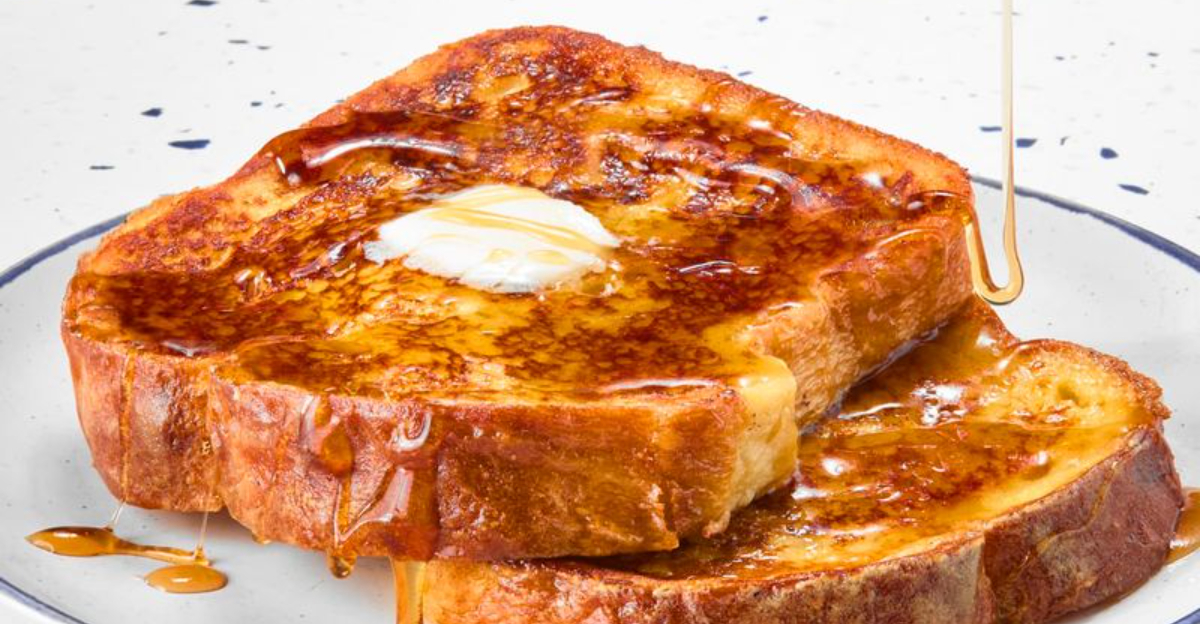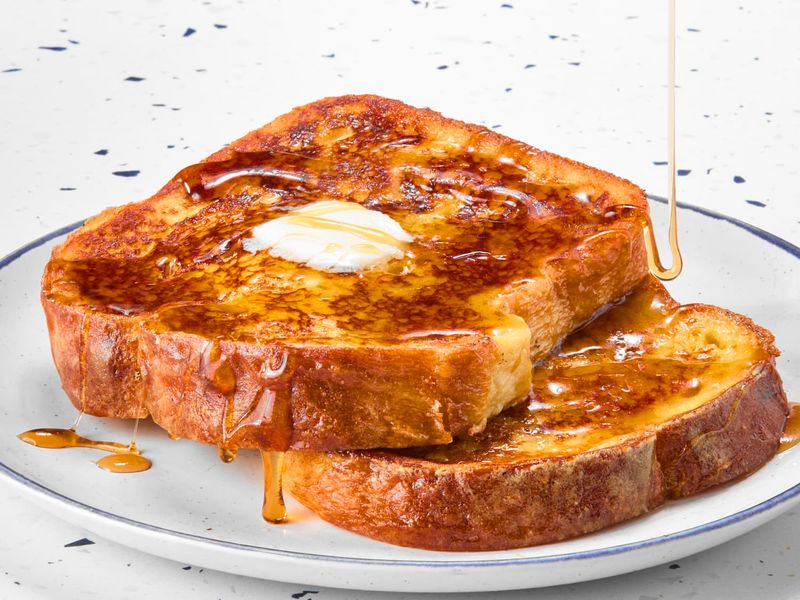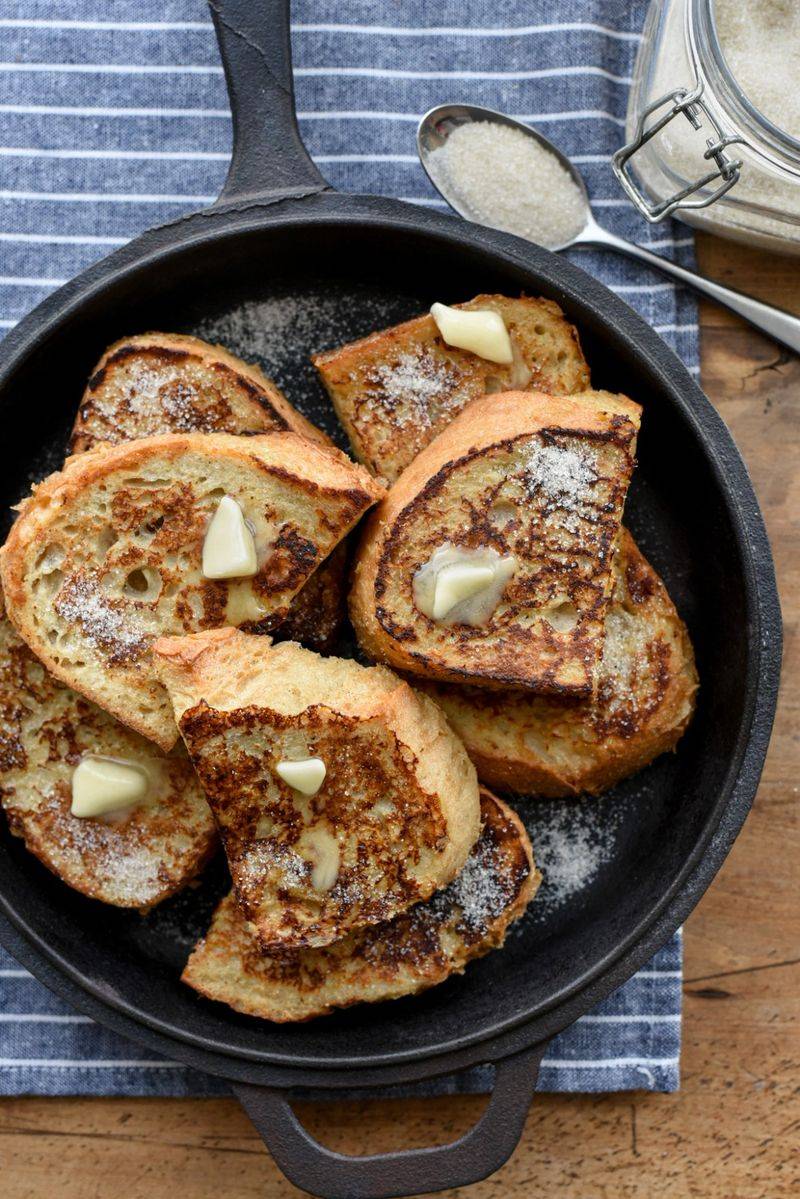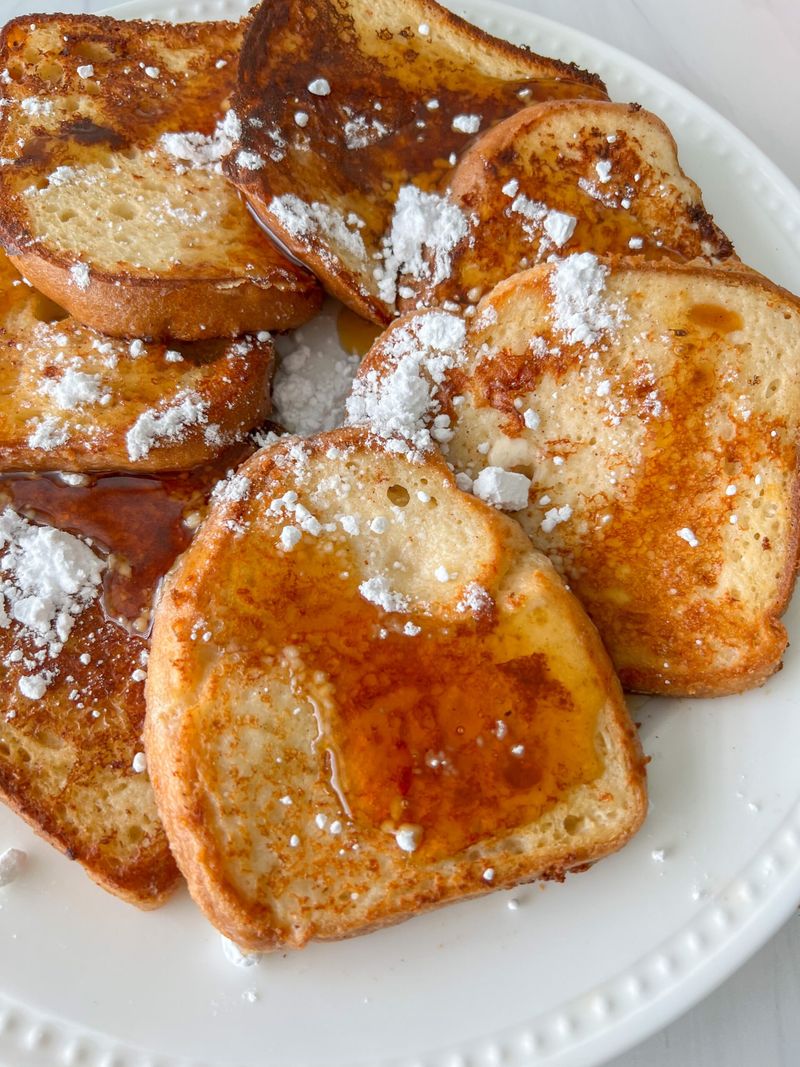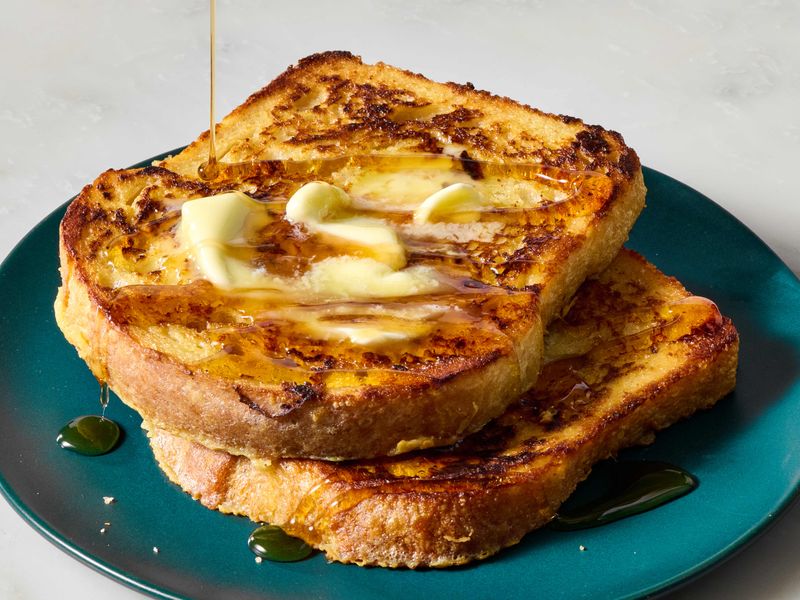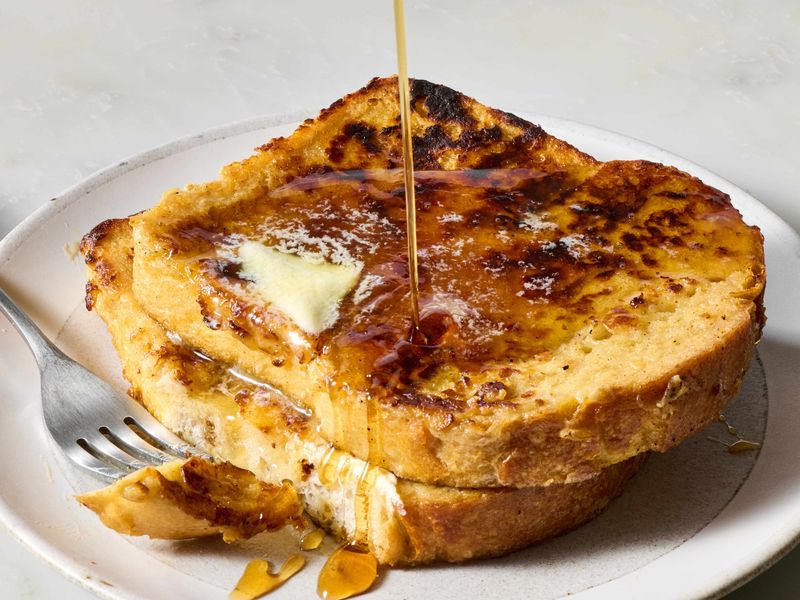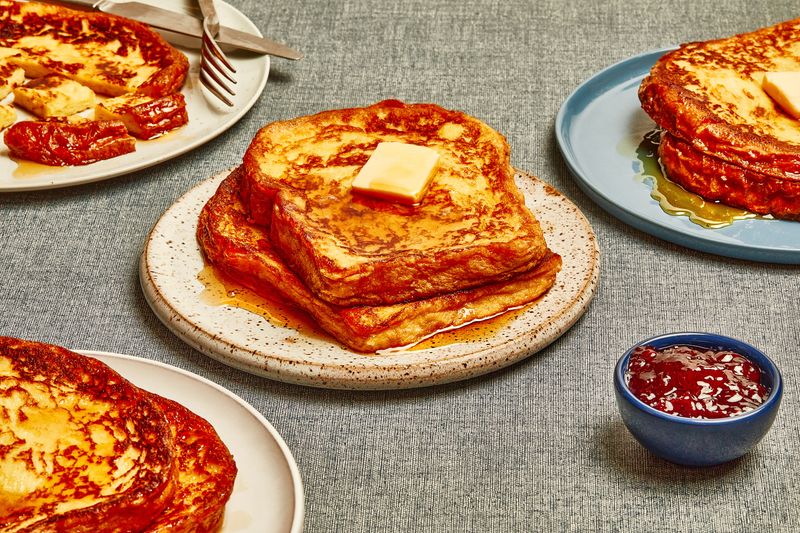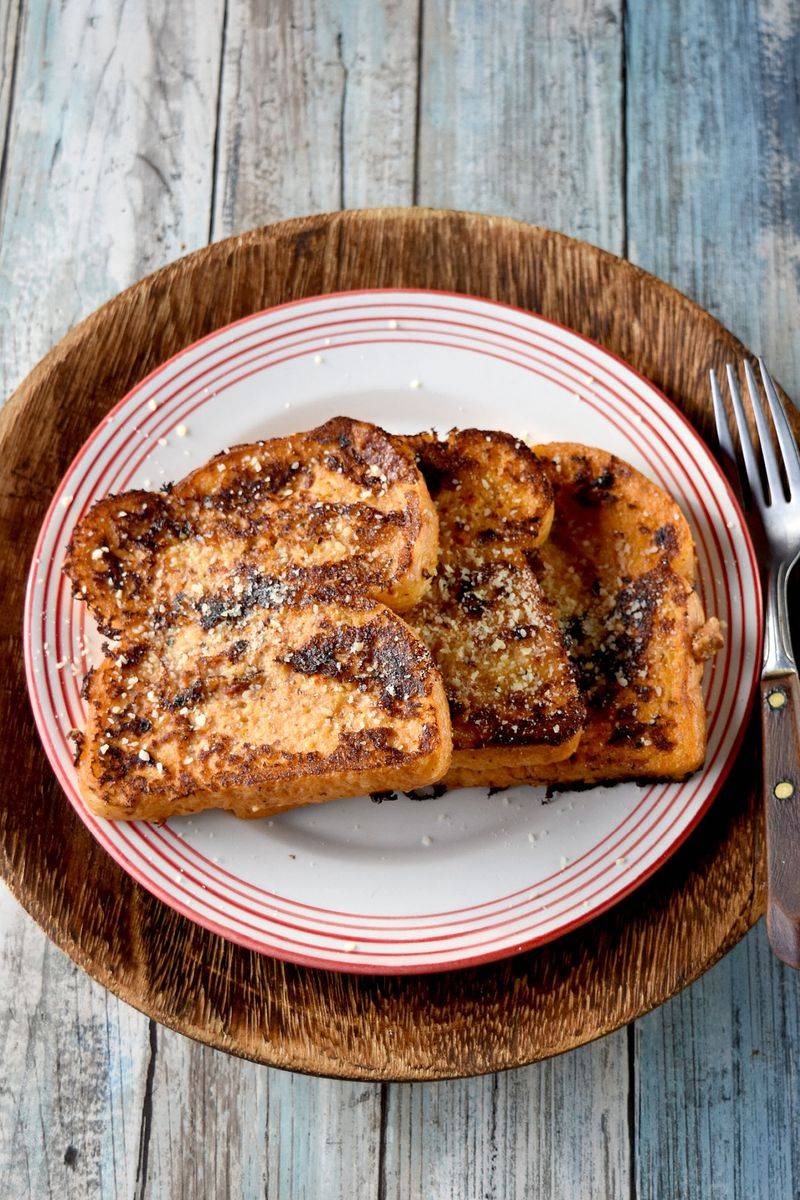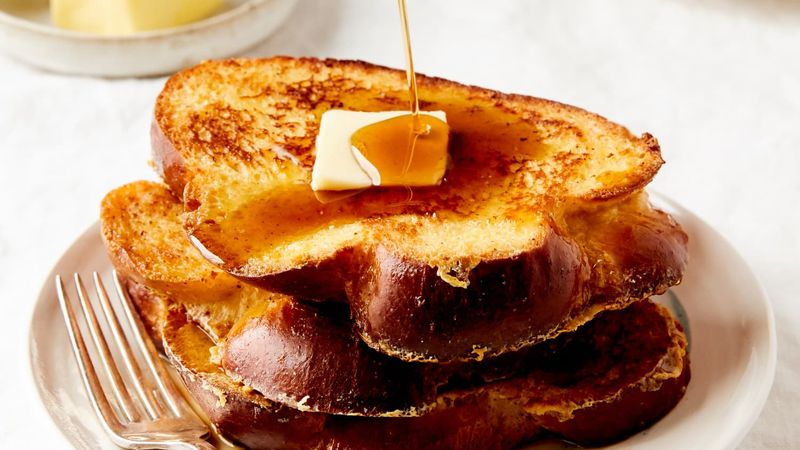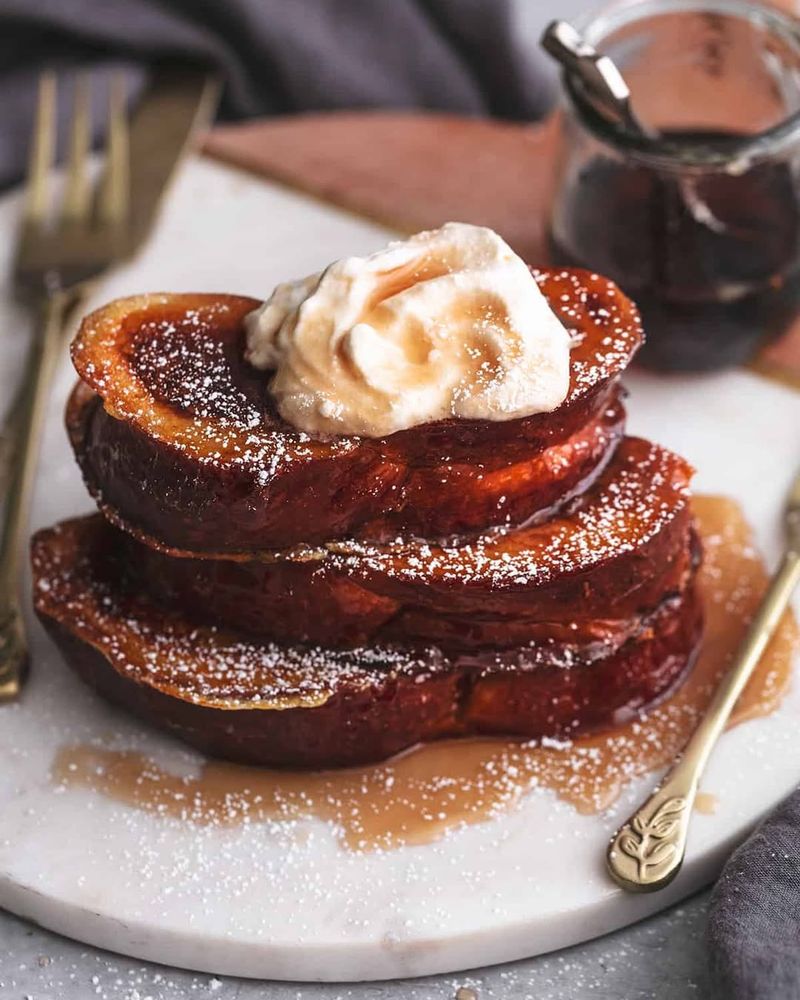Nothing beats the smell of golden French toast sizzling in a pan on weekend mornings. But after countless soggy failures and burnt disasters, we decided to put nine popular methods to the ultimate test. Our kitchen became a French toast laboratory as we tried everything from different bread types to creative custard swaps. After hours of flipping, tasting, and comparing, one method clearly rose above the rest.
1. Fresh Bread Method
Most home cooks reach for day-old bread, but fresh slices surprised us with their superior performance. The soft texture absorbs custard like a sponge, creating that perfect balance everyone craves.
Fresh bread soaks up the egg mixture quickly and evenly. This means no dry spots or overly soggy centers that plague many homemade attempts.
The result? Crispy golden exteriors with creamy, custardy interiors that practically melt in your mouth. While unconventional, fresh bread delivers consistently excellent French toast every single time.
2. Dried Bread Technique
Traditional wisdom says stale bread makes the best French toast, so we tested this classic approach thoroughly. Dried bread definitely has more structure and won’t fall apart during cooking.
However, the absorption process takes much longer than expected. You need patience as the bread slowly drinks up the custard mixture over several minutes.
The final product has a firmer, denser texture that some people actually prefer. While not our top choice, dried bread creates perfectly acceptable French toast with a more substantial bite and less creamy interior.
3. Egg-Free Custard Experiment
Yogurt seemed like a brilliant egg substitute for those with allergies or dietary restrictions. The creamy texture looked promising in our mixing bowl, and we had high hopes.
Unfortunately, bread struggles to absorb yogurt-based custard properly. The mixture sits on the surface rather than penetrating the bread’s structure like traditional egg custard does.
The cooking process becomes unpredictable, resulting in unevenly cooked French toast that’s often soggy in spots. While creative, this method simply doesn’t deliver the consistent results that make French toast special and satisfying.
4. No Custard Approach
This unconventional method involves soaking bread in plain milk, then adding beaten eggs and sugar directly on top. The technique promises simplified preparation and unique flavors.
During cooking, the sugar caramelizes beautifully, creating an attractive golden-brown exterior. The visual appeal definitely impressed our taste testers at first glance.
Unfortunately, the interior remains disappointingly soggy without proper custard penetration. The lack of that signature custardy texture makes this method fall short of true French toast expectations, despite its interesting caramelized finish.
5. Flour-Enhanced Custard
Adding flour to custard creates an interesting twist that produces notably different results. The flour forms a thin, extra-crispy coating that adds textural contrast to each bite.
The interior maintains that desirable creamy quality while the exterior becomes almost pancake-like. However, the flour amplifies the eggy flavor significantly, which can overpower delicate vanilla and cinnamon notes.
This method works well for those who enjoy heartier, more substantial French toast. The crispy coating provides satisfying crunch, though purists might find the altered flavor profile too different from traditional expectations.
6. Heavy Cream Luxury Version
Replacing milk with heavy cream transforms ordinary French toast into something truly extraordinary. The rich custard penetrates bread fibers completely, creating unmatched flavor depth and luxurious texture.
During cooking, the cream creates a soufflé-like fluffiness that’s absolutely divine. Each bite delivers incredible richness without being overly heavy or cloying to the palate.
The exterior crisps beautifully while maintaining that signature creamy interior. This indulgent approach elevates weekend breakfast to restaurant-quality levels, making every bite feel like a special occasion treat worth savoring.
7. Olive Oil Cooking Method
Swapping butter for olive oil promised healthier French toast with Mediterranean flair. The oil certainly delivers uniform browning and creates an impressively crispy exterior finish.
However, olive oil’s distinct flavor completely dominates the delicate sweetness that makes French toast special. The savory notes clash with vanilla and cinnamon, creating confusing flavor combinations.
While the texture improvements are undeniable, the taste trade-off isn’t worth it. Olive oil works better for savory applications, but traditional butter remains essential for achieving that classic French toast flavor profile everyone expects and loves.
8. Double-Dipped Technique
This method involves dipping bread twice in custard for maximum absorption and flavor penetration. The extra step requires patience but promises superior results through enhanced saturation.
The first dip allows initial absorption, while the second ensures complete custard penetration. This technique works especially well with thicker bread slices that need extra encouragement.
Results show improved custard distribution and more consistent texture throughout each slice. While time-consuming, double-dipping creates reliably excellent French toast with enhanced flavor and perfect moisture balance in every single bite.
9. The Perfect Winner: Fresh Bread with Heavy Cream
Our ultimate winner combines fresh bread with heavy cream custard, cooked in butter for absolute perfection. This method delivers everything you want in French toast without compromise or disappointment.
The fresh bread absorbs rich custard completely while maintaining structural integrity. Heavy cream provides luxurious flavor and creates that coveted fluffy, soufflé-like interior texture.
Butter adds essential flavor notes while creating the perfect golden crust. Every element works together harmoniously, producing consistently outstanding French toast that exceeds all expectations and makes weekend mornings truly special.
